Insurance Mobile App Development: How to Build a Health Insurance App
While digitalization is entering every single industry, customers expect insurance companies to provide digital tools for managing policies. Adoption of customer-centric digital strategies has been recognized as one of the major trends among insurers. Strategy Meets Action names digital transformation among the top game-changers in the industry, explaining that challenges in customer experience force insurers to invest in new technologies.
People want to communicate their insurance issues largely through mobile channels and seek more personalized offerings. A 2019 Deloitte industry outlook shows the rise in expectations for convenience and customization, as well as the undeniable need for more flexible policies and services.
While most companies admit the benefit of insurance mobile app development, very few are in the game. In the US, less than one-third of the top insurers offer mobile apps. And existing applications mostly fail to engage users and fulfil their function of a universal channel for communication and management of insurance plans.
Reports reveal that less than one-third of customers are satisfied with their insurance providers and even fewer are satisfied with their insurers’ digital strategies. Since inconvenience causes the decrease in loyalty and billions-worth losses for insurance companies, making a helpful app can be a chance for them to boost loyalty.
Problems of the Insurance Industry Mobile Apps Solve
What customer problems can be solved with an insurance application?
- Paperwork and bureaucracy. With an app, there’s no need to send emails or visit an insurance company’s office. Signing up for a policy, changing it, and submitting claims can be done in a few clicks within an application.
- Choosing a policy. Customers claim that choosing the right insurance plan is one of the biggest challenges. Policies are often presented in a way that leaves many ambiguities and customers want to have more transparency and guidance which can be offered in a mobile app.
- Customization. Sometimes, people pay more for policies that ignore their unique needs. An app that collects relevant data about the person’s activity and lifestyle can provide more customized offers.
- Fast reimbursement. The main focus of insurance apps is to make the claim validation as fast and troubleless as possible. When all information is kept inside an app and all the actions are performed via an app, it means less hustle for both insurance workers and customers. The famous Lemonade service advertises their app by its speed: it takes 90 seconds to get insured and three minutes to get paid. The founder of the health insurance app Oscar measures its success by how fast people can find what they need. He claims it should take no more than a few minutes.
- Data unification. A mobile app can be a universal tool for customers to contact their insurance company and review their insurance history. It eliminates the need for visits, calls, and tiresome paperwork.
- Finding a reliable provider. Since three parties are involved in insurance, customers face the challenge of not only finding the right insurer and policy but also finding a suitable provider covered by insurance. In health insurance, it’s crucial for patients to get adequate medical help and an app should recommend a reliable doctor, provide guidance on finding and contacting a clinic and so on.
By eliminating common hurdles and simplifying the choice and policy management, insurance companies become several steps closer to a more customer-centric service which can decrease the churn level and bring more revenue.
Types of Insurance Apps
Most insurance mobile apps are being developed by companies to represent their offers divided into categories like health, property, or travel insurance. Besides branded company apps, there are the following development options:
- Quote comparison. An insurance comparison app works as an aggregator of different insurance providers available in a certain area. For example, the US-based service Insurify allows comparing insurance quotes in three categories (car, home, life) and buying the one a customer chooses via an app.
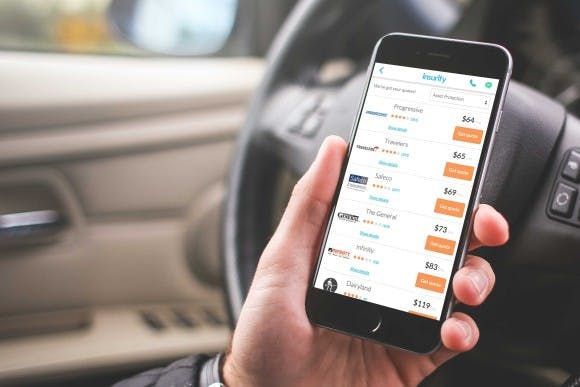
Insurify. Source: Root
- A specific type of insurance coverage. For instance, the car insurance mobile app Root is designed for drivers: it gathers driving information from smartphone’s sensors and offers insurance plans based on that information. There are many health insurance applications some of which we will further describe. A specific focus helps an insurance app to enhance the level of personalisation – it simplifies the collection and analysis of customer data.
- Finances management including insurance. Insurance is an integral part of managing personal or business finances so it might be a good idea to develop an app like Tomorrow which facilitates managing life insurance and finances by offering tools for making a will or building a trust fund.
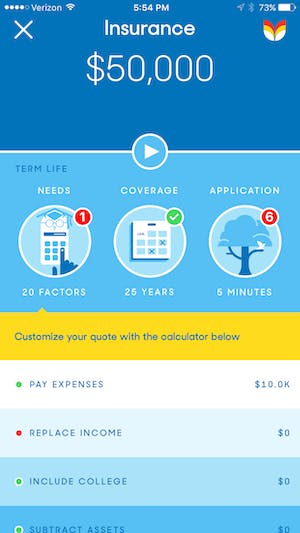
Tomorrow. Source: Coverager
The Rise of Health Insurance Apps
Health insurance apps mostly struggle to achieve enough downloads, with only a few of them reaching more than 100,000. In a 2015 Research2Guidance report, only one application, Aetna Health, was proven to be successful. Recently, new players like Oscar have entered the market, trying to improve the situation with health insurance apps adoption.

What new health insurance apps are embracing is a concept of value-based care, delivering the best care at the lowest cost. How do they live up to this premise and engage users?
- Simplicity and attractive design. ‘Easy’ is the most used word in the Oscar app’s description – the company appeals to the common demand for more comprehensible health insurance services and ensures that Oscar users will save time and worries thanks to the app. Aetna Health also markets its app as a tool that helps understand and manage such a difficult matter that healthcare is. A Research2Guidance analyst distinguishes beautiful design and usability among the top priorities for insurance apps.
- Healthy living tips and additional perks. Oscar features a step tracker that gives daily rewards for reaching activity goals. Alternatively, Aetna uses cross-promotion to attract users to several applications related to healthy living and having more control over health.
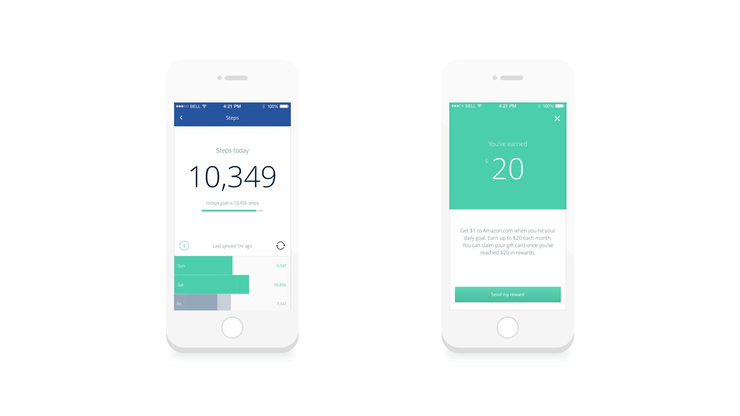
Oscar. Source: Wired
- Social impact. The Lemonade app we’ve mentioned earlier takes a flat fee and when some money is left from that fee, it is donated to various social causes. It’s a nice move that helps build trust around the service.
Features of a Health Insurance App
What features are a must for a mobile insurance app? We will review them from the perspective of three types of users: patients, insurers, and healthcare providers.
- A profile with a digital healthcare ID. It should be protected according to the latest security practices.
- Seach. Patients should be able to browse through possible types of insurance coverage. Even though it’s hard to predict which health issues will happen – which makes it nearly impossible to pick a perfect policy – users need to have the information about the covered services, available hospitals, and copays. Given transparency, patients can calculate their out-of-pocket costs and choose the right policy.
- A network of providers. Even innovative apps like Oscar that collect many positive reviews because of their instant interaction and engaging design also cause dissatisfaction because of a short and ununified network of healthcare providers. The more healthcare professionals are available for booking via an insurance app, the more convenient is the choice for a patient. Users might need different types of searches: for nearby doctors, for professionals by speciality, experience, language etc.
- A questionnaire to offer a suitable policy. An insurance app can set typical questions to offer policies based on the answers.
- Policy management. A user should be able to review, cancel, or change a current policy. Providing an opportunity to shift from another insurance carrier might be a good advantage.
- Billing. Integration with popular payment systems will guarantee users a seamless experience of buying and renewing policies with just a few taps.

Source: NRMA Insurance
- Renewal reminders. There can be in-app notifications about renewing a current policy.
- Accident reporting. There should be a tutorial of what to do in case something happens to the insured property. For example, the Insurance Agent App has a section for car accidents with steps to follow: call 911 in case of injuries, don’t leave the scene, document as much as possible.
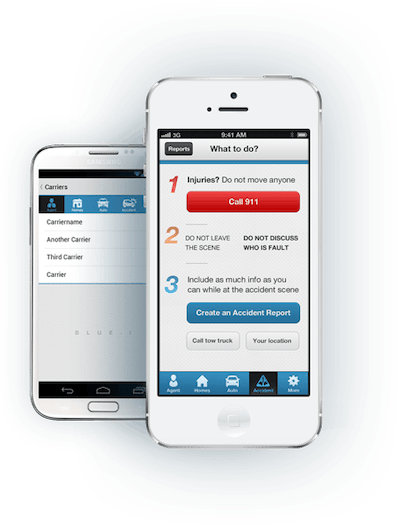
Source: Insurance Agent App
- Claim reporting. Settling a claim is the number one feature in any insurance app. Users will need access to documents, a digital signature, and a possibility to upload photos. Lemonade even offers an option to submit a claim with a video: app’s co-founder explains that this feature is beneficial because people are less likely to lie on camera.
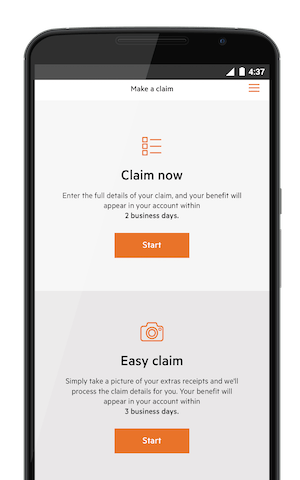
Source: Australian Unity
- Chat with concierges. Before connecting patients to doctors, a health insurance application should have an initial live chat with concierges who can consult on insurance coverage and direct patients to healthcare professionals.
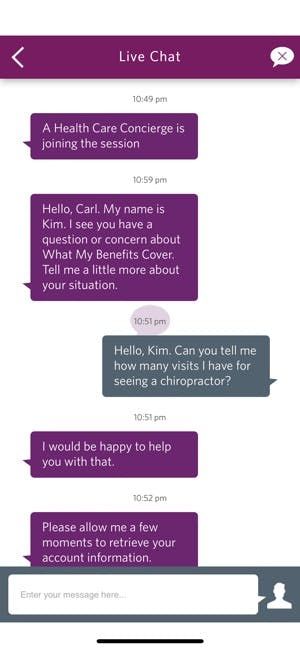
Source: UPMC Health Plan
- Reminders. It may be a great addition to integrate a calendar with reminders about following doctor visits or medication intakes.
- Loyalty program. Many insurers incorporate bonus systems to keep customers loyal. In a health insurance program, it’s logical to have an activity tracker with rewards.
The major features of an insurer’s version are the following:
- Customer information. Insurance agents should be able to add customers via an app, edit their contact information, and see their billing history.
- Policy management. When some changes are introduced to policies or loyalty programs, agents can update the information in an app.
- Claim management. A document exchange option is needed for each submitted claim to be reviewed by an agent.
- Chat. If insurance agents are available via an in-app chat, it eliminates unnecessary visits and calls, making it easier for customers to learn about the policy details.
- Statistics. App development for insurance companies can help them keep the business successful and customers satisfied by gathering statistics about what policies people choose, how they like to be contacted, what issues they find problematic and so on.
A healthcare provider has to have a personal profile and chatting options. A health insurance application can be a part of a telemedicine service that allows for virtual doctor visits or can only offer to book hospital appointments.
Data Collection in a Mobile Insurance App
As we’ve said, data collected through an app can improve the level of personalisation of insurance products. Christopher Surdak distinguishes five levels of app’s awareness about a user. At level 1, it just contains information about insurance products and at level 2, it adds some features for users to edit their information or request a quote – nobody needs such limited functionality in an app nowadays. Only at level 3, an app becomes a unified tool for performing every action related to insurance – this is the must minimum value modern insurance apps should deliver.
At level 4, an app becomes context-aware – for example, the Root app gathers information about driving patterns to provide more personalised offers. However, such persistent monitoring may lead to incorrect results and complaints. Innovative car insurance products may offer a telematics box that is installed into a car to monitor driving activity. This way, an app won’t use unnecessary data collected via a smartphone but only the relevant information analysed by a telematics device.
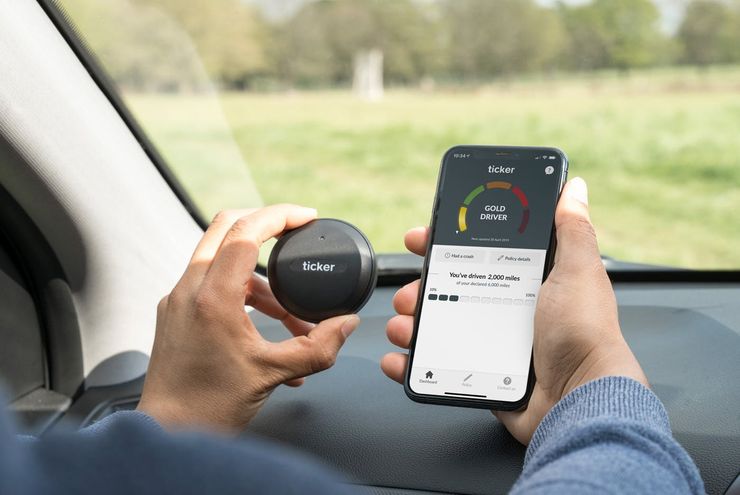
Source: Ticker
At level 5, an insurance app can use customers’ social data to analyse, for example, their shopping history and recommend certain policies based on that. While such data collection may cause hesitation because of the privacy issues, it can also be helpful in tailoring personalised offers – which is the biggest subject of competition between insurance carriers.
Artificial Intelligence in Insurance
Innovative technologies are in use in the insurance business and help create a higher level of engagement and move towards the practice of more transparent, usage-based pricing for policies. Insurance companies can implement artificial intelligence for:
- Developing chatbots. A Canadian company Excalibur Insurance uses an AI-powered bot for quick initial interaction with customers. Insurify has a virtual assistant for Facebook Messenger.
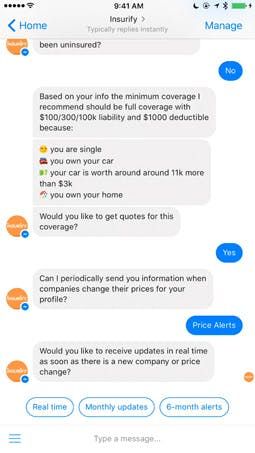
Source: Insurify
- Recognising fraud patterns. Kirontech’s Kironmed algorithms analyse medical claims to detect inaccurate billing or underutilisation of services.
- Offering individually priced policies. A Germany-based company Clark has built an insurance robo-advisor that analyses a customer’s insurance situation and makes suggestions on how to improve it. Accolade Inc’s Maya Intelligence platform implements machine learning to provide the most relevant health insurance coverage based on patient background.
How to Make the Best Insurance App
Customisation, instant interaction, and easy management are three pillars of a successful insurance app. Your solution should be designed in a way for every step of the process – entering personal information, paying for insurance, filing a claim – to be convenient. An engaging application should make customers feel more in control of their expenditures: with this achieved, people can choose a higher premium and stay loyal to their insurer.
If you’re interested in insurance app development, drop us a line and we’ll discuss your ideas and their implementation.
22 October 2020
